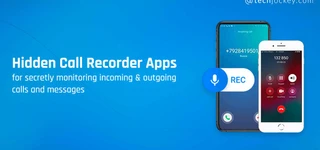The Rise of AI-Driven Vishing: How to Safeguard with Cybersecurity

What is Vishing and Why It Matters?
Vishing, short for voice phishing, is a growing threat in the cybersecurity landscape. Unlike traditional phishing scams that rely on emails, vishing uses phone calls to trick individuals into revealing sensitive information such as bank account details, social security numbers, and personal identification numbers (PINs).
Cybercriminals can be incredibly persuasive over the phone, leveraging emotional manipulation, impersonation, and advanced technologies to make their scams appear authentic. As a result, the risk of falling victim to vishing has increased significantly.
In fact, CrowdStrike 2025 Global Threat Report show that vishing attacks surged by a staggering 442% from the first to second half of 2024, with scammers targeting millions of individuals and organizations alike.

The rise of Interactive Voice Response (IVR) systems, AI-generated voices, and other cybersecurity tools have made vishing more sophisticated and harder to detect. This blog post will explore these evolving technologies used in vishing scams and provide insights into how organizations and individuals can protect themselves from these threats.
Vishing: The New Face of Phishing Scams
Voice phishing, or vishing, is a type of social engineering attack where scammers impersonate trusted entities over the phone. The attackers often pose as representatives from banks, government agencies, or tech support services, claiming urgent issues or security threats. Their goal is to manipulate victims into providing confidential information that can be used for financial theft or identity fraud.
The Role of IVR Systems in Vishing Attacks

Smartflo - Cloud Telephony Solutions
Starting Price
Price on Request
One of the key technologies that scammers exploit is IVR systems. IVR systems are automated phone systems used by businesses to manage incoming calls, route them to the correct department, and sometimes gather information from callers.
They are commonly used in customer service applications, allowing callers to navigate a menu and provide details such as account numbers or personal identifiers without ever speaking to a human.
However, scammers have realized they can use these same systems to execute vishing fraud. By setting up fake IVR systems, fraudsters can impersonate legitimate companies and trick victims into entering sensitive information, such as credit card details, bank account numbers, and passwords.
Suggested Read: 10 Best IVR Systems to Ensure Business Continuity in Uncertain Times
How Do Scammers Use IVR to Phish for Personal Data?
The mechanics of a vishing scam using IVR systems are relatively simple but highly effective:
- Caller Impersonation: Scammers impersonate a trusted organization, such as a bank or government agency, claiming that there has been suspicious activity on the victim’s account.
- IVR System Setup: The victim is then prompted to enter personal information through a menu on the automated IVR system, which appears legitimate.
- Data Harvesting: Once the information is entered, it is collected by the scammer, and the victim may not realize they’ve been defrauded until it’s too late.

VAANI
Starting Price
₹ 2220.00 excl. GST
IVR-based vishing is particularly dangerous because it relies on the automation of the call, making it harder for individuals to differentiate between legitimate calls and fraudulent ones.
AI Voice Generators: The Future of Scamming
Another technology that has significantly raised the stakes in the battle against vishing is the advent of AI-generated voice technology. Powered by advanced machine learning and neural networks, AI voice generators can create incredibly realistic and convincing voices that replicate real people, even with just a few seconds of audio input.
For instance, AI voice cloning tools such as Respeecher and VALL-E allow fraudsters to mimic the voice of an individual, be it a family member, friend, or a company executive, making it far easier to gain a victim’s trust and manipulate them into transferring money or sharing private information.

FineVoice
Starting Price
$ 8.99
Real-World Example: AI-Driven Vishing Scams
A notable case of AI-driven vishing involved a CEO scam in which fraudsters used an AI voice clone of a company executive to trick an employee into transferring funds to a fraudulent account. The employee was convinced by the CEO’s voice, which was nearly indistinguishable from the real thing, and sent a large sum of money before realizing the fraud.
This highlights the growing sophistication of vishing attacks and the significant role that AI voice generators play in making these scams more convincing and difficult to detect.

VoiceOwl
Starting Price
Price on Request
The Dangers of Caller ID Spoofing in Vishing
Caller ID spoofing is another tactic that scammers use to make vishing attacks seem more credible. This technique involves altering the caller ID information so that it appears as though the call is coming from a legitimate source, such as a bank or government agency.
By using caller ID spoofing tools, scammers can increase the chances of the victim answering the phone, making it easier to deceive them. For instance, if a scammer spoofs a phone number to appear as though it’s coming from a bank’s customer service line, the victim may be more likely to engage in conversation, believing the call is legitimate.

HitPaw Voice Changer
Starting Price
$ 15.95
The Rising Threat of Vishing: Statistical Insights
The growth of vishing attacks is staggering, and the numbers reflect the increasing severity of this issue:
- According to CrowdStrike’s 2025 Global Threat Report, vishing incidents rose by 442% from the first half to the second half of 2024, with many attacks targeting banking customers and financial institutions.
- Keepnet Labs reports that the average financial loss from a vishing attack is $577 per incident. This highlights the significant personal and organizational costs associated with these scams.
- A recent study revealed that over 50% of vishing attacks target individuals in the financial services sector, which includes banks, credit unions, and investment firms. This sector remains a prime target due to its handling of sensitive financial data.
As vishing becomes more prevalent, it’s essential to understand how cybersecurity software can help mitigate these risks.
How Cybersecurity Can Help Defend Against Vishing?
While the rise of sophisticated technologies has made vishing more dangerous, there are ways to defend against these attacks. By leveraging modern cybersecurity tools and best practices, individuals and organizations can minimize their exposure to voice phishing.
1. Caller ID Verification and Call Blocking Apps
One of the simplest yet most effective ways to avoid falling victim to vishing is by using caller ID verification services. These services authenticate incoming calls, ensuring they match the identity of the caller, which can help individuals identify suspicious calls before answering.
Many call-blocking apps and robocall detection software are available that can identify and block potential vishing calls in real time. These apps use databases of known scam numbers and analyze call patterns to flag suspicious activity.

SentinelOne
Starting Price
Price on Request
2. Multi-Factor Authentication (MFA)
Multi-factor authentication (MFA) is another critical defense measure. MFA adds an extra layer of security by requiring more than just a password to access sensitive accounts. For example, a user might need to provide a second factor, such as a code sent to their phone, to verify their identity.
By enabling MFA, individuals and businesses can make it more difficult for scammers to gain access to accounts, even if they manage to obtain a victim’s login credentials via vishing.

NeuShield Data Sentinel
Starting Price
Price on Request
3. AI-Based Detection Tools
Another exciting development in the fight against vishing is the use of AI-based tools that analyze incoming phone calls for signs of fraud. These tools can identify irregularities in voice patterns, call metadata, and speech features to detect whether a call is legitimate or AI-generated. By integrating these tools into their security systems, businesses can prevent vishing attempts from reaching employees or customers.
Suggested Read: Forensic Signature Analysis: The Future of Cybersecurity

Singularity Complete
Starting Price
$ 159.99
4. Employee Training and Awareness
Training employees to recognize the signs of a vishing attack is one of the most effective preventive measures. Regular cybersecurity training can help employees recognize suspicious calls and know how to respond appropriately. They should be taught to never disclose sensitive information over the phone, especially if they did not initiate the call.

Singularity Control
Starting Price
$ 79.99
Conclusion: Staying Safe in the Age of Voice Phishing
As technology continues to advance, so too do the tactics employed by cybercriminals. Vishing, once a simple scam involving human callers, has evolved into a high-tech crime facilitated by IVR systems, AI voice cloning, and caller ID spoofing.
However, by implementing strong cybersecurity measures, including multi-factor authentication, AI-driven detection systems, and employee training, individuals and businesses can reduce the risk of falling victim to these increasingly sophisticated voice phishing scams.
In the age of digital transformation, staying informed and vigilant is key to defending against vishing and other cyber threats. Remember: don’t trust the voice on the other end of the line unless you’re absolutely sure it’s legitimate.
The Techjockey content team is a passionate group of writers and editors dedicated to helping businesses make informed software buying decisions. We have a deep understanding of the Indian software market and the challenges that businesses face when choosing the right software for their needs. We are committed... Read more






.png?d=100x100)





















